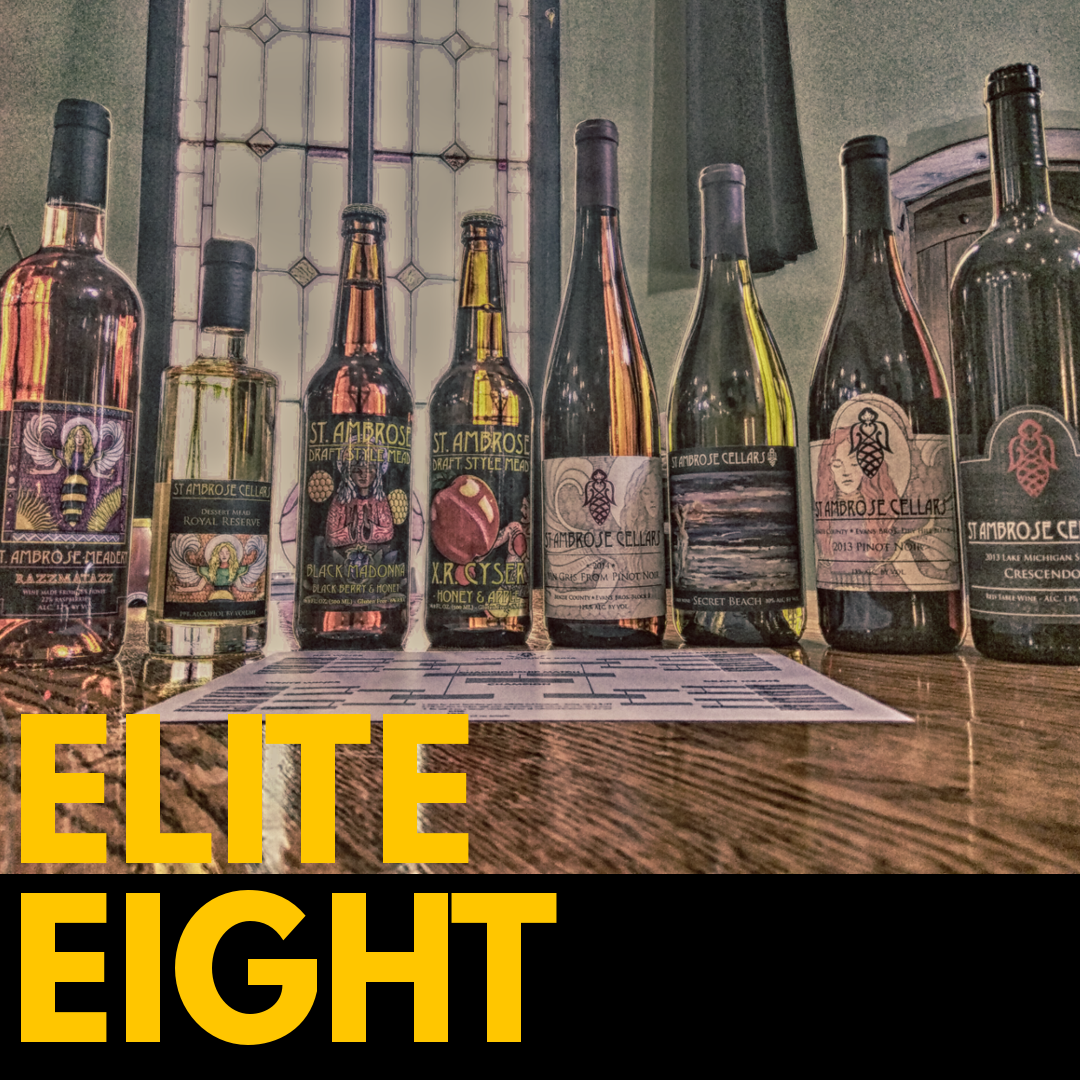
by stambrose | Mar 28, 2016 | Mead
After two weeks of heavy competition, we’re entering the home stretch of Mead Madness. The regions are boiling down to their finals – with the winners ready to move on to the Final Four and championship.
Red Wine Region
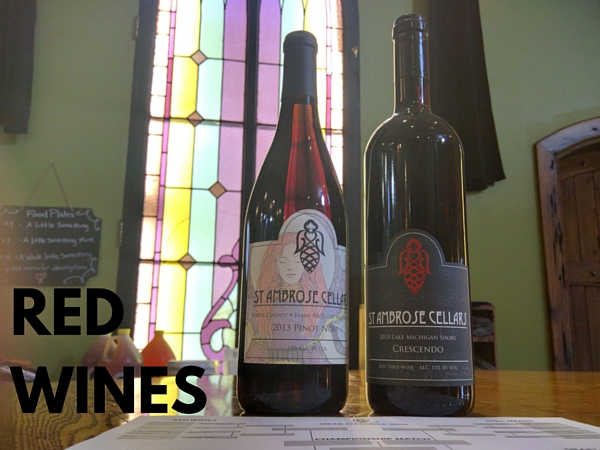
2013 Crescendo, after a tough battle with the 2012 Crescendo in the first round, has moved on into the regional final against perennial favorite Pinot Noir. Can the best of the best red wine blend take down this traditional grape? Both have scored similar vote totals on their way to this matchup. Crescendo prevailed against the 2012 version and handled Syrah in the second round. That was a big win – Syrah was a pre-tournament favorite to make a run. Pinot Noir has had perhaps an easier run, taking on Cab Franc in the opening round and downing our Cottage Red table wine in the second round.
[poll id=”30″]
White Wine Region
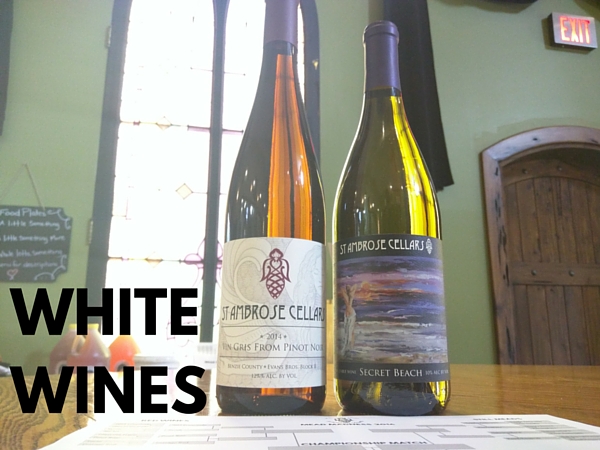
In this region we’ve seen multiple close contests, with a majority of the matchups coming down to just 1 or 2 votes. Vin Gris has made it here by defeating Pinot Grigio and Chardonnay. Secret Beach continues something of a Cinderella run. After defeating Late Harvest Riesling by just one vote in the first round, Secret Beach scored a close victory over the 2013 Riesling (which is now sold out in the tasting room!). Who will move on to battle the Red Wine champ?
[poll id=”31″]
Still Mead Region
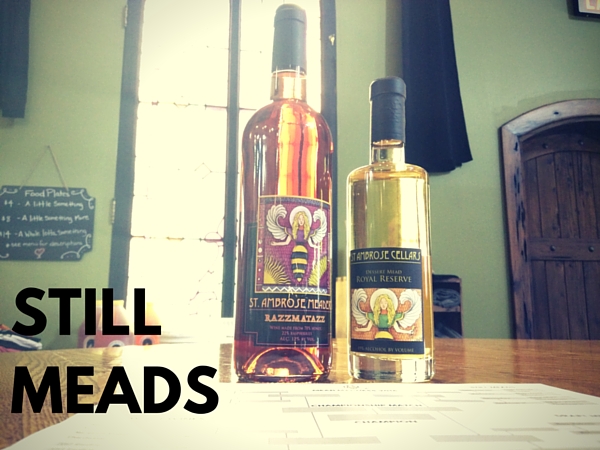
In the traditional still mead bracket, we’ve seen some upsets. While Tupelo Ambrosia and Star Thistle had a first round duel, they were both popular picks to make the finals. But neither is here today – Razzmatazz (riding the momentum of its Gold Medal at the Mazer Cup) is lining up against the powerhouse Royal Reserve for the regional title. Can the fruity flavor of the original St. Ambrose mead overtake the two-years-aged dessert deliciousness of Royal Reserve? You decide!
[poll id=”32″]
Draft Mead Region
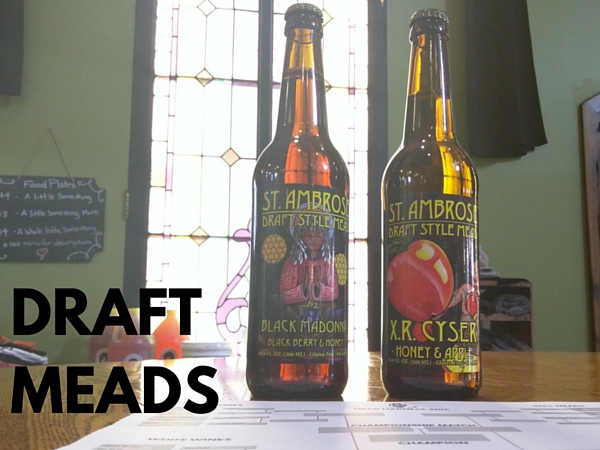
Our popular draft meads all have loyal followings, but only two remain. After a tough battle with John Lemon, the apple pie in a bottle X.R. Cyser has advanced to face the ever-popular Black Madonna in what is certain to be a titanic fight for the regional championship. Sour blackberry or apple cinnamon? These two bountiful bouqets of flavor will both leave you satisfied, but only one can emerge the winner.
[poll id=”33″]
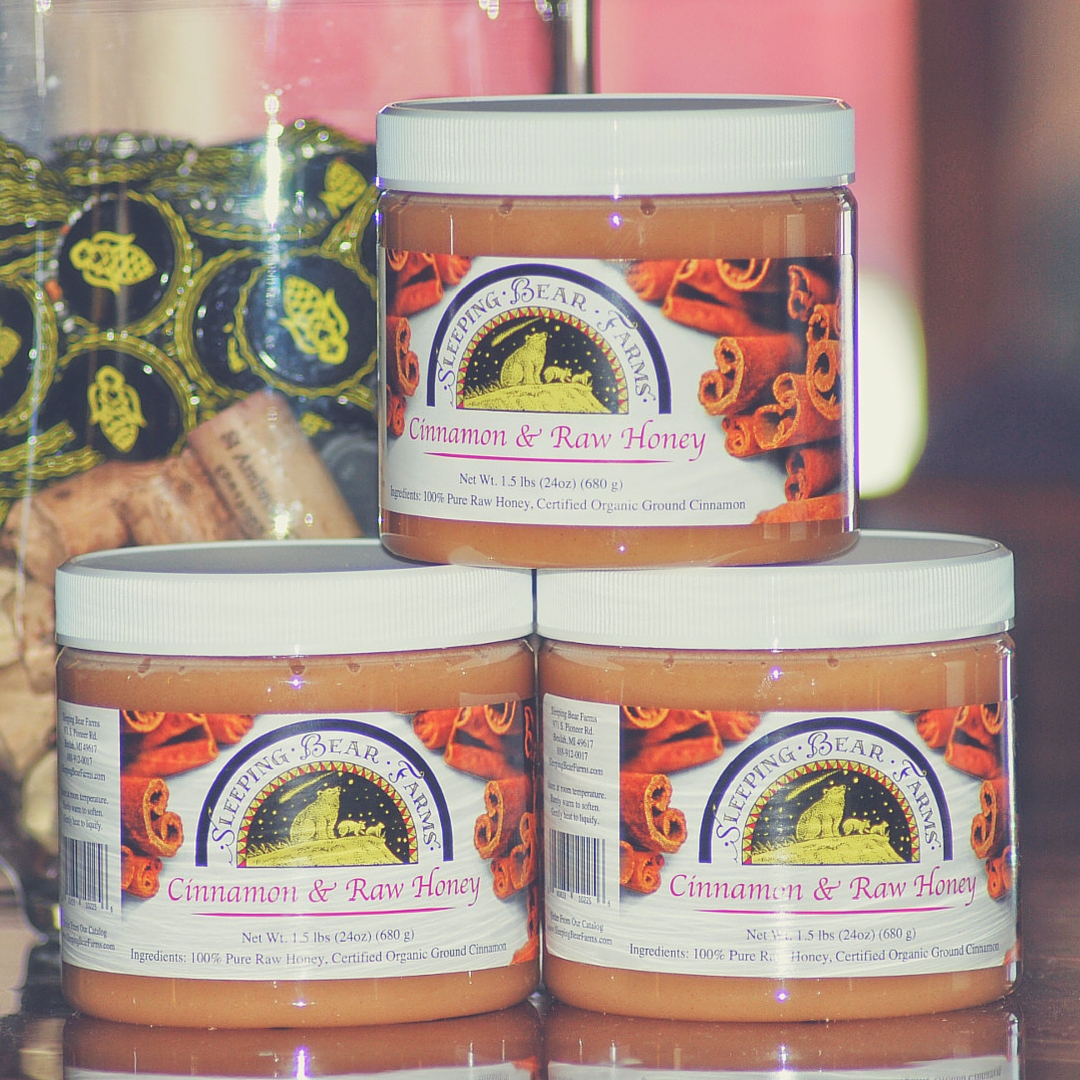
by stambrose | Mar 25, 2016 | Honey
We are always excited to share goodness from the hive with our faithful customers as well as our new ones. Our newest product from Sleeping Bear Farms is sure to utterly wow your taste buds, but we’re just as excited about the health benefits of this collaboration between our own raw honey and organic cinnamon bark!
This flavor combo is truly divine. We’ve been trying it on pretty much everything we can think of, inspired by the guy in the Bee Barn who encouraged this idea come to fruition, Mr. Lane.
Nathon, our humble production manager at Sleeping Bear Farms, says that he and his daughters starting making their own version of this delectation at home and spreading it on toast, stirring it into oatmeal, adding loving spoonfuls to their hot water for a tasty treat before bedtime or to soothe and tame a tempestuous tummy.
He says he and his wife even like to make a little moonshine with this blended perfection. After discovering the vast array of health benefits to this palate pleaser, he knew he had an idea worth sharing with all of us.
Thus began the road to developing our first “flavored” honey, made with the star of the show at SBF and St Ambrose Cellars; Star Thistle Honey. Star thistle is an abundant wild flower that our worker bees seek out in while summering here in Benzie County and the outlying areas. Star Thistle, or Centaurea solstitialis, is an incredible source of pollen, thus nectar for our revered pollinators. A plant with a tap root system, it has a crucial role in restoring the soil by bringing up vital micronutrients. While agriculturists may consider this an invasive species, or “weed”, we know the valuable role it plays in our production of ‘the nectar of the gods”—honey. We think star thistle is the bee’s knees!
Raw Honey Benefits
Raw Honey has numerous health benefits, from allergy reduction and wound healing to stabilizing blood pressure and balancing sugar levels. It is considered the most perfect food, as it contains all essential nutrients to sustain life. And did you know that honey NEVER spoils? An archaeological dig unearthed honey in a hive from over 5,000 years ago and it was still good!
Cinnamon Health Benefits
And cinnamon? Well cinnamon is known since ancient times as a gift fit for kings! Evidence based health benefits of the cassia bark suggest that cinnamon is:
- Loaded with Antioxidants
- Loaded with Anti-inflammatory properties
- May cut the risk of Heart Disease
- Can improve Insulin Sensitivity
- Beneficial for neurodegenerative diseases like Alzheimer’s and Parkinson’s
- Reduces growth of Cancer cells
- Antibacterial
- Antifungal
Combining these two powerhouses together is not simply delicious, it is also potent medicine; good for your senses, your soul, and your well-being.
You’ll find the 1.5 pound jar of cinnamon honey stocked here in our tasting room. It is also available at Oryana Food Co-op, Family Fare, Olsen’s and more in Traverse City and online at sleepingbearfarms.com.
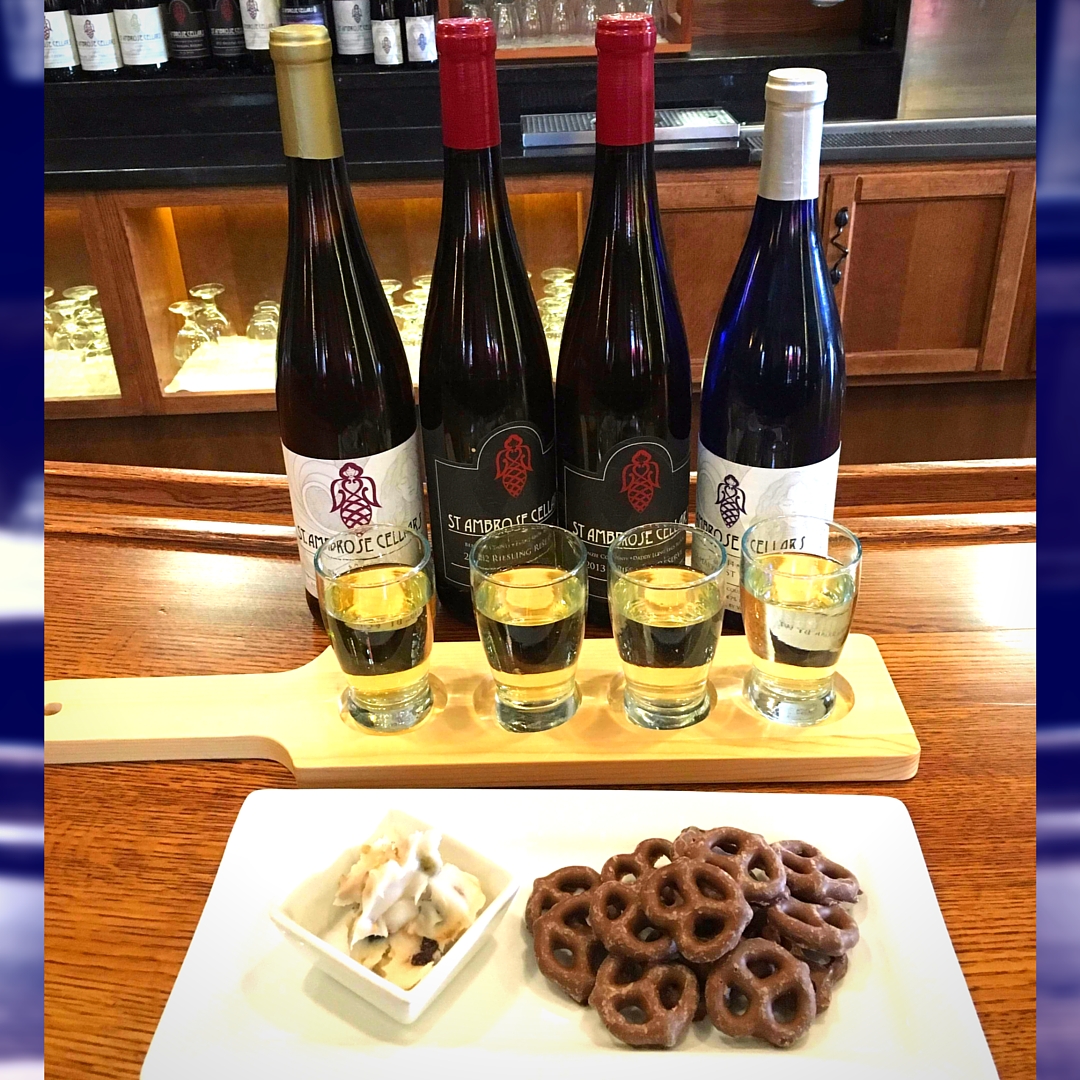
by stambrose | Mar 18, 2016 | Wine
In honor of the sweetness of spring, we have a nectarous treat now available here in the tasting room. It pairs so nicely with our range of Rieslings that you can get this deliciousness alongside a flight of all four for $12.
As our menu expands, it was time to add a little sweet to all our savory options. This feature includes decadent chocolate glazed pretzels served alongside a rich and creamy spreadable coconut and rosewater aperitif, sprinkled with pistachios, dried cherries & sunflower seeds.
Our flight of Rieslings include our 2011, ’12 & ‘13 Riesling Reserve(s) and our Late Harvest Riesling from 2013. We are especially proud of these noble wines because the grapes were all grown for us right here in our beloved Benzie County.
Our 2011 & 2012 Riesling Reserve & Our 2013 Late Harvest Riesling were produced from Evans Bros Block II Vineyards and our 2013 Riesling Reserve grapes come from the Schutzki Family at Daddy Long Legs Vineyards.
Evan’s Bros, out in Joyfield Township, come from a long line of farmers in our county’s most well-known farming district. Five generations of their family have tended to their land and fruit crops and have helped us produce a world class wine.
Daddy Long Legs Vineyard is the result of hard work, focus and deep pride. The Schutzki family all tend devotedly to their horticultural crops just down the road from St Ambrose.
It is a privilege to partner with these two family farms to produce these delicious wines, which vary greatly in taste despite being the same grape. We love the subtle nuances that a grape can pick up from different season and harvesting times. That’s why we make wine.
You’ll notice the 2011 Riesling Reserve is quite dry but packs a punch with notes of citrus and traditional Riesling flavors. The growing season in 2012 was quite warm, and thus allowed us to extend the growing season and pick fully ripened fruit, so our 2012 Riesling Reserve is much sweeter, but with just enough acidity to provide structure to this perfectly balanced wine.
Our 2013 Riesling Reserve was fermented in Hungarian Oak barrels, which added complexity and structure to the cluster pressed fruit, and the 2013 Late Harvest Riesling takes its rich sweet flavor from allowing the grapes to mature on the vine, concentrating the flavors.
Come see for yourself how the chocolate with coconut cream just melt in your mouth, paired with these beautiful wine selections.
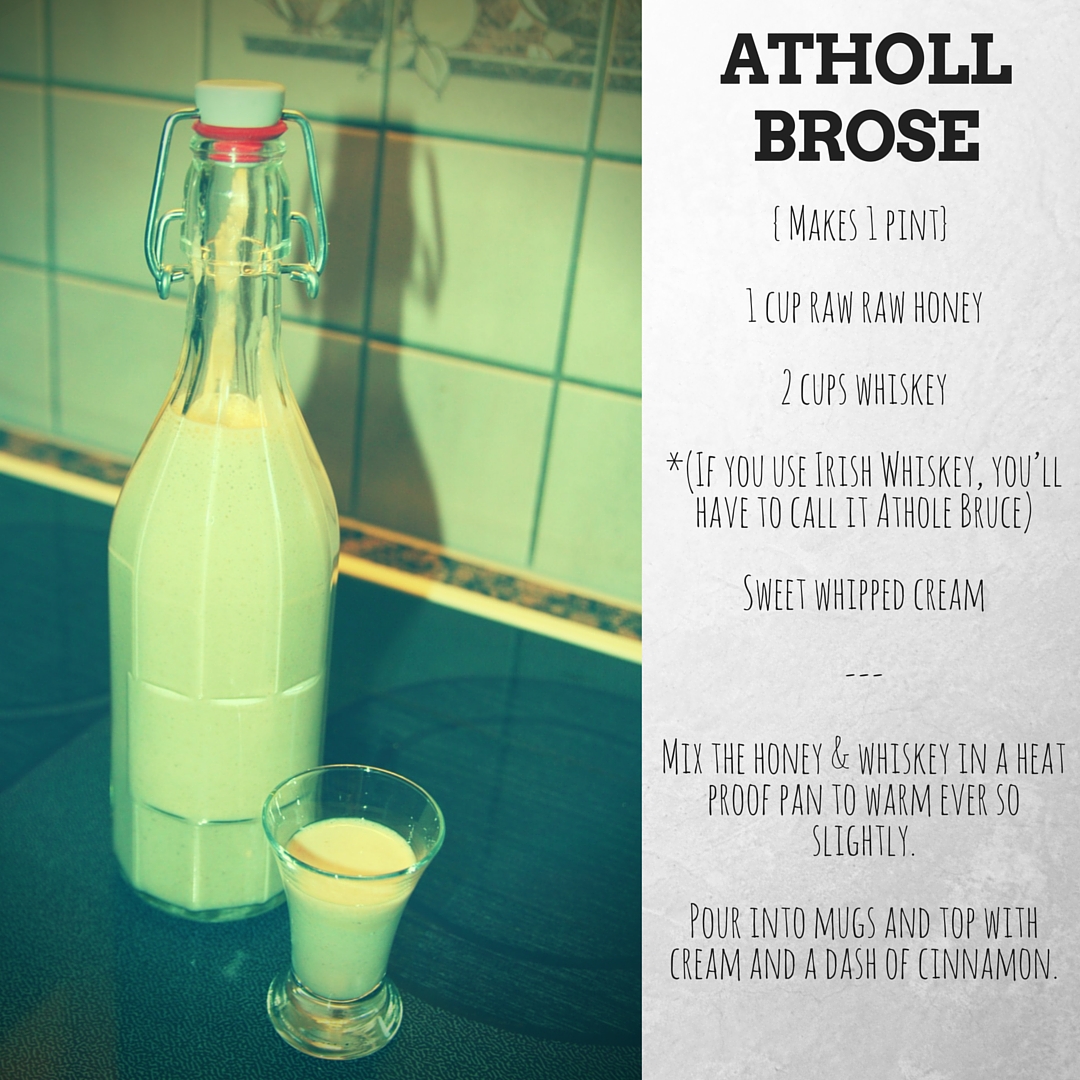
by stambrose | Mar 1, 2016 | Drink Recipes
Our kitchen is frequently buzzing with our explorations in honey. Always looking for fun and tasty ways to stir the nectar of the gods into the fold, we whip up small batches of honey love, almost everyday. This weekend we discovered an old Scottish Highland recipe for Atholl Brose.
This drink is named after the First Earl of Atholl, who, according to legend, quashed a Highland rebellion in 1475 by filling the rebel leader’s well with the mixture, making him easily captured. They call it the Nectar of the Scots, and guarantee it ‘shall put a bloom on the cheek & a weakness in the knee’.
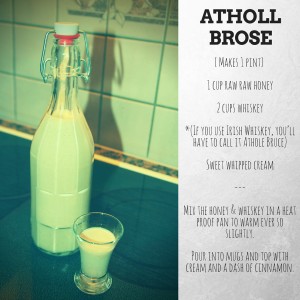
Atholl Brose
{Makes 1 pint}
1 cup raw raw honey
2 cups whiskey
*(if you use Irish Whiskey, you’ll have to call it Athole Bruce)
Sweet whipped cream
Mix the honey & whiskey in a heat proof pan to warm ever so slightly.
Pour into mugs and top with cream and a dash of cinnamon.
Enjoy!
And if you try it, post a picture to our Facebook page!
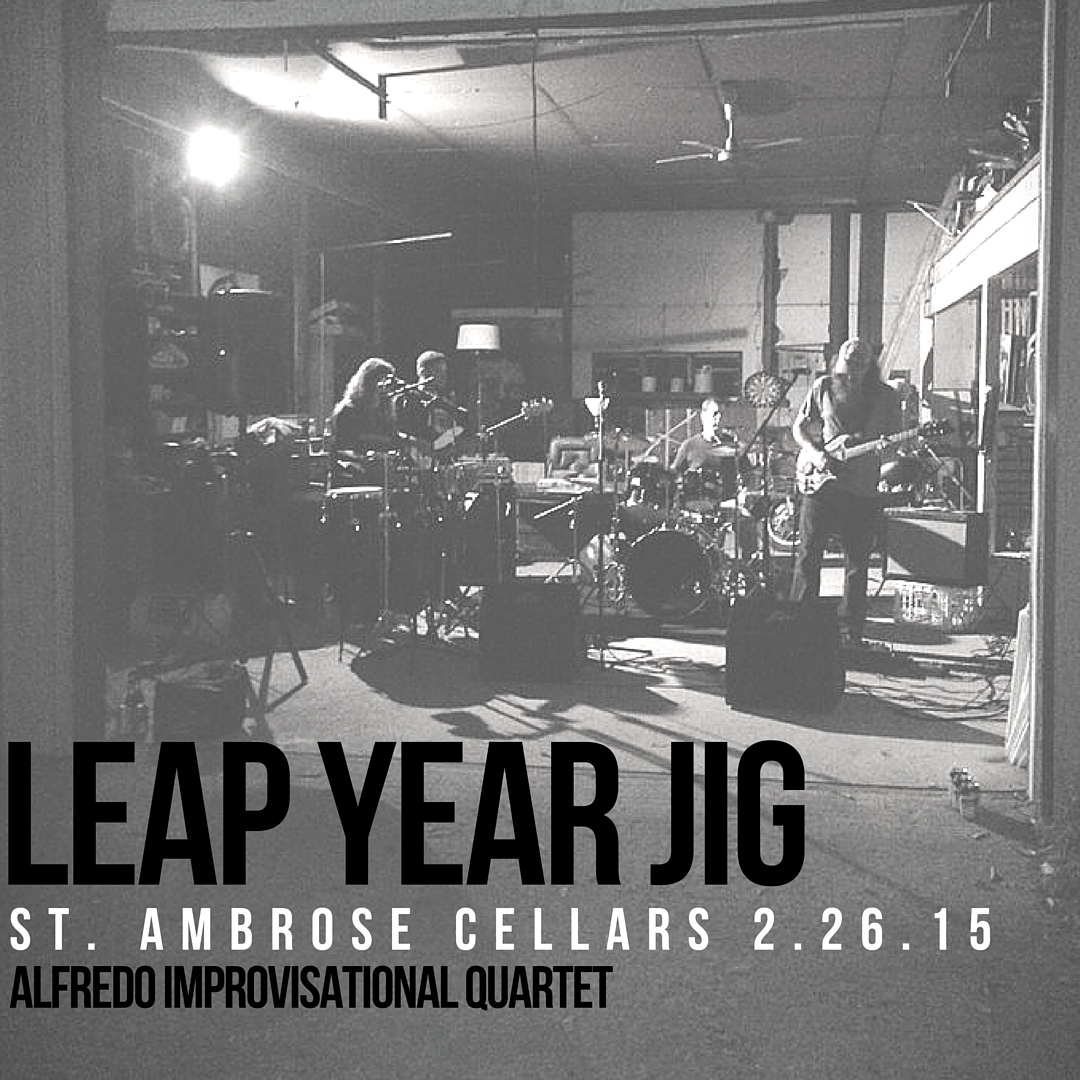
by stambrose | Feb 24, 2016 | Tasting Room
Hi, search engine visitor! We’re glad you’ve stumbled upon this post, but it’s really old – so mosey on over to our events page and see what we’ve got planned for February 2020!
Here at St Ambrose, we are missing the buzz of the bees as they retreat & reboot down on the farm in the Florida Panhandle with the boss man and Mrs. Jones. Winter being what it is here in the northlands, the honey bees become snowbirds and travel by the semi loads, tucked safely into their bee boxes, while visions of sunny honey combs dance in their heads. The team down there help restore the worker bee population and tend to the queens. Boss man gets to return to his roots, working directly with his beloved bees, while the idea factory that is his visionary mind, keeps churning out ways to grow and keep the buzz alive.
We love & miss him! But while the cat’s away…. these mice decided to throw a party!
Leap Year Jig
It is Leap Year, after all! You’re probably asking yourself what exactly does one celebrates on Leap Year, right? So we did a little research, digging around to discover just what the big deal is, and we were pretty fascinated by the origins of this day that only comes every four years! It’s really a mathematical equation that seeks balance, something winemakers strive towards also. So we’ve got that in common. But it’s a whole lot more of a smarty pants concept than this blogger can spell out, so I’m letting Wikipedia break it down for you, dear reader!
A leap year (also known as an intercalary year or a bissextile year) is a year containing one additional day (or, in the case of lunisolar calendars, a month) added to keep the calendar year synchronized with the astronomical or seasonal year. Because seasons and astronomical events do not repeat in a whole number of days, calendars that have the same number of days in each year drift over time with respect to the event that the year is supposed to track. By inserting (also called intercalating) an additional day or month into the year, the drift can be corrected. A year that is not a leap year is called a common year.
For example, in the Gregorian calendar, each leap year has 366 days instead of the usual 365, by extending February to 29 days rather than the common 28. Similarly, in the lunisolar Hebrew calendar, Adar Aleph, a 13th lunar month is added seven times every 19 years to the twelve lunar months in its common years to keep its calendar year from drifting through the seasons.
The name “leap year” comes from the fact that while a fixed date in the Gregorian calendar normally advances one day of the week from one year to the next, the day of the week in a leap year will advance two days (from March onwards) due to the extra day added at the end of February (thus “leaping over” one of the days in the week). For example, Christmas fell on Tuesday in 2001, Wednesday in 2002, and Thursday in 2003 but then “leapt” over Friday to fall on a Saturday in 2004.
In the Gregorian calendar, the current standard calendar in most of the world, most years that are multiples of 4 are leap years. In each leap year, the month of February has 29 days instead of 28. Adding an extra day to the calendar every four years compensates for the fact that a period of 365 days is shorter than a tropical year by almost 6 hours. This calendar was first used in 1582.
Some exceptions to this basic rule are required since the duration of a tropical year is slightly less than 365.25 days. Over a period of 4 centuries, the accumulated error of adding a leap day every 4 years amounts to about 3 extra days. The Gregorian calendar therefore removes three leap days every 400 years, which is the length of its leap cycle. This is done by removing February 29 in the three century years (multiples of 100) that cannot be exactly divided by 400. The years 2000 and 2400 are leap years, while 1800, 1900, 2100, 2200, 2300 and 2500 are common years. By this rule, the average number of days per year is 365 + 1⁄4 − 1⁄100 + 1⁄400 = 365.2425. The rule can be applied to years before the Gregorian reform (the proleptic Gregorian calendar), if astronomical year numbering is used.
(Thank you, Wiki!)
Pretty great reason to let us pour you a glass of your favorite fermented beverage, don’t you agree? On Friday night, February 26, we’ll do just that while leaping. Seriously, come see for yourself! Because on Friday, Alfredo Improvisational Quartet will be jamming into the night with their hot licks!
Alfredo brings the thirsty to the well like the Pied Piper. St Ambrose is always hoppin’ when these boys assemble. We’re pretty sure the mead tastes better during & after they’ve been here, from all the vibration of the music and good vibes passed around. Happy to help us celebrate the leap in the time and space continuum, they’re staying a bonus hour, in honor of the bonus day. We’ll get this party started at 6PM and the mead and the music will flow until 10PM.
Make sure you bring your appetite, because we’re here to whet it. We’re rolling three deep with our palate pleasing pairings for the party! (Say that 3 times quickly. Go ahead. We’ll wait…)
Check us out!
A Little Something: small plate featuring Sleeping Bear Farms hypnotic honey mustard, a fresh and funky jerky pate, pretzel twists galore and oven-baked, multi-grain, gluten free crackers for $4.
A Little Something More: Tasty, local, cured meats, fancy cheeses, & a collection of fermented and pickled veggies served with those oven baked, multi-grain, gluten free crackers for $8.
A Whole Lotta Something: We like to raise a loving cup to this moveable feast fit for a Mead Weilding Viking. It includes a piquant array of cured meats, aged cheese, pickled veggies, jerky pate`, brie wedges with a blackberry honey drizzle, relishes and crackers for $14.
And, as if you needed any more reasons to sparkle on over here Friday night, we’ve got the Dancing Bare Ambrosia on tap! That’s right–we’ve added bubbles to an already perfect blend of fermented honey & grapes! There’s also a brand new draft mead waiting for you that we like to call Smoove, because it is! Supple and sweet as honey, this gingery peach carbonated melomel is reminiscent of our Royal Reserve (which was aged in bourbon barrels for the ultimate in smoothness.) Smoove puts a little fire in your belly, coming in at around 10% ABV, reminding you to savor the flavor and always drink responsibly.
Which brings us to our final newsworthy paragraph: The waning moon on Friday will be 86.53% full. If you should find yourself near enough to ski or snowshoe your way, over the river, through the woods, under La Bella Luna, to the party, we’ll not only give you a high five, we’ll also give you 10% off— AND…. if you were born on February 29 in 1994 or earlier we’ve got a goody bag with your name on it, so show us your I.D. and collect on the goodness that awaits you, Leap Year Baby.










